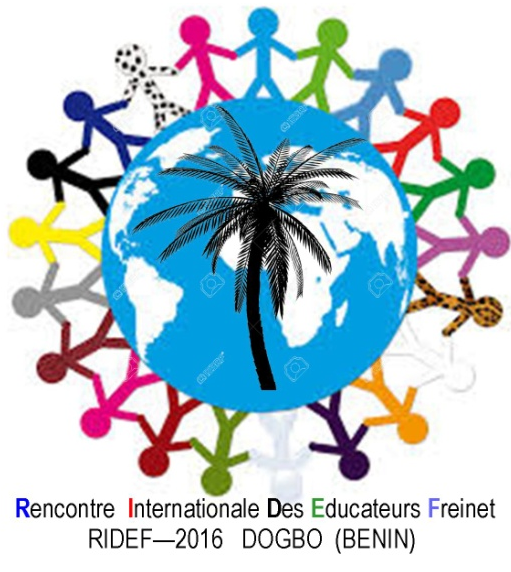Explanation of the logo of the RIDEF 2016, Benin
The land represents the vastness and density similar to the International  Meeting of Freinet Educators grouping all countries by transcending the sovereignty of nations. Looking at the logo, the mainland is white and the water is blue as symbols of representation of the earth, we do not invent another land. Looking closely, Africa is at the center, it shows that the RIDEF 2016 is a concern of a continent and not a case of a country. This is why no country is shown schematically.
Meeting of Freinet Educators grouping all countries by transcending the sovereignty of nations. Looking at the logo, the mainland is white and the water is blue as symbols of representation of the earth, we do not invent another land. Looking closely, Africa is at the center, it shows that the RIDEF 2016 is a concern of a continent and not a case of a country. This is why no country is shown schematically.
A tree on the nature of the plant environment, a soil from agriculture resource, a plant resembling the map of Benin, A BIG GIANT PALM and we notice within Africa. The palm is one of the few plants whose elements have a market value: The roots, trunk, wine; walnut, shell; the fine, the branches, the rib, meal ... .It plant of Beninese culture, basis of our economy. It is the result of the mixing of Brazilian and Beninese people as one who won at the International Meetings Of Educators Freinet (RIDEF).
Also before and after independence, Benin is the biggest producer of palm in Africa and the Third globally. Finally, the palm Promotion was made by one of the great reformers in the history of our people, the king GHEZO. This famous King of Abomey recognized by its educational paradigm of the "JAR Gap" symbolizing the people's unity and cooperation.
Around the earth, the men of all colors, regardless of gender, age and religion make a round hand in hand carry the Freinet Pedagogy which itself promotes cooperative education and the education cooperation.
In short, celebrating the RIDEF 2016 in Benin; the small town of Dogbo and the community that lives, is committed to welcoming all guests to discover the wonders First, culture and wealth of Benin to sow again as elsewhere seeds of education for peace, tolerance, in contrast, cooperation in promoting the environment and the conquest of the empire of intelligence and quality of education. In short, promoting the talent of each through intercultural and educational brewing. Thus, children and adolescents of tomorrow will build a world focused on "education for citizenship through participatory democracy"